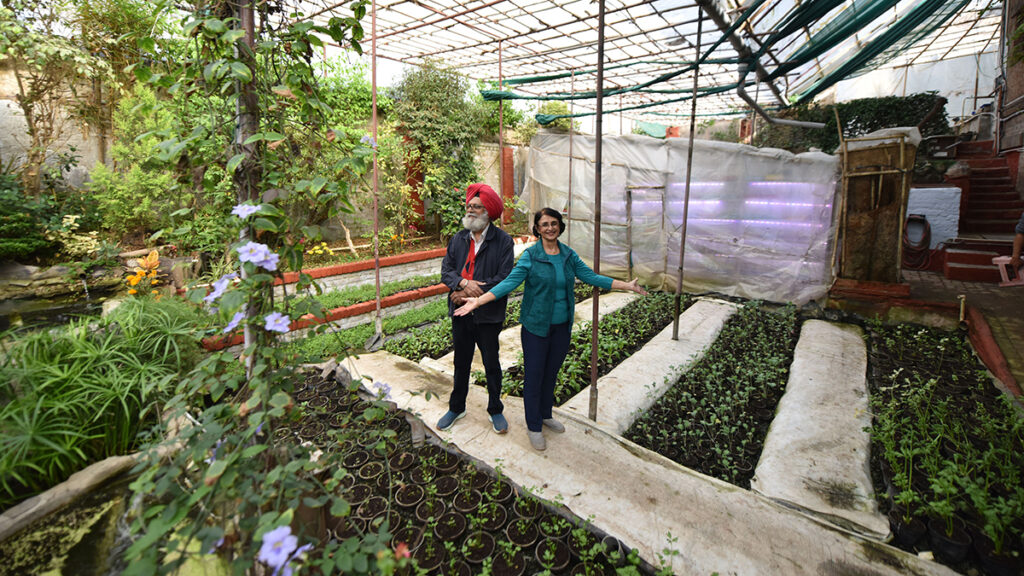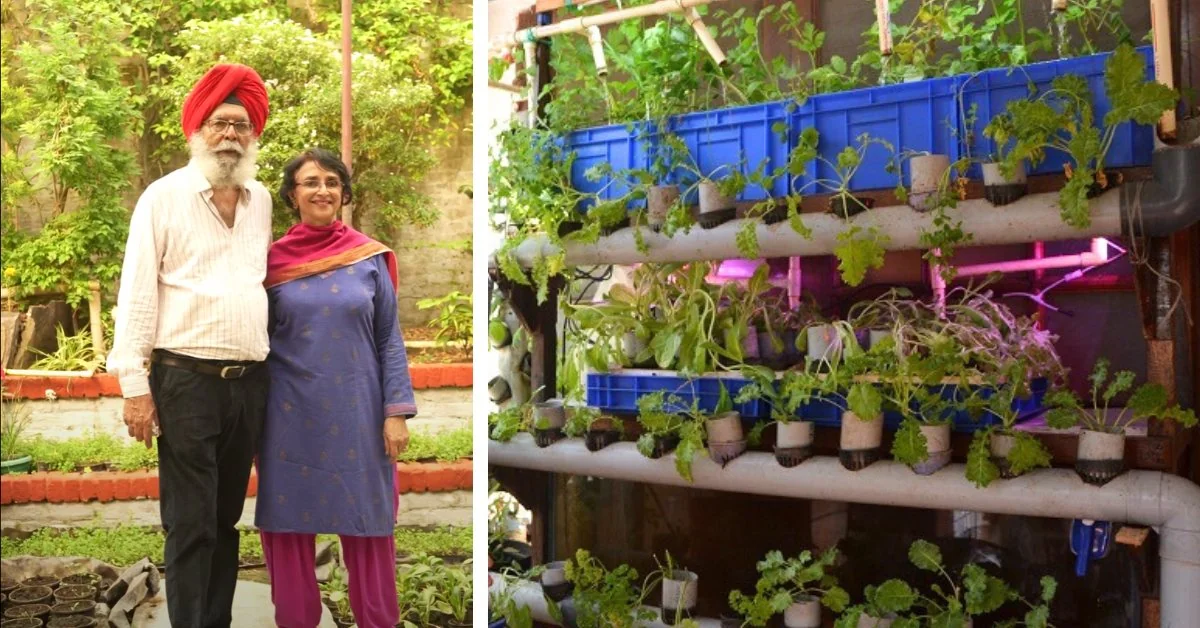As Delhi grapples with rising pollution levels and deteriorating air quality, one couple in Sainik Farms has found a way to breathe easy. Urban farmers Peter Singh and Neeno Kaur have created a self-sufficient, sustainable ecosystem that keeps the AQI at their home as low as 15. Their secret? Aquaponics and smart air filtration techniques.
A Personal Journey Towards Clean Air
Peter Singh, an 80-year-old PhD in Topology from Delhi University’s St. Stephen’s College, and his wife, Neeno Kaur, embarked on their sustainable living journey after Kaur was diagnosed with leukemia. Determined to improve their living conditions and health, they adopted aquaponics—a farming method that uses nutrient-rich water from fish tanks to grow plants. Today, their rooftop garden is home to around 15,000 plants, creating a natural air purification system.

How Their System Works
At the entrance of their home, a specially designed cooling panel with water trickling through it serves as the first layer of air filtration. An exhaust fan draws in outside air, removing pollutants before channeling it into their greenhouse. Inside, their plants further purify and oxygenate the air, reducing PM 2.5 levels to just 5 and PM 10 levels to 10. This clean air then circulates through their home, providing an environment vastly different from the rest of Delhi.
Sustainability at Home
Beyond air purification, the couple’s approach integrates waste management and efficient water use. Their aquaponics system not only supports plant growth but also reduces water consumption significantly compared to traditional farming. They emphasize that their model is scalable, adaptable to homes of all sizes—from large bungalows to small apartments. “Even in a small flat, you can use a balcony model to grow at least 500 plants and filter the air entering your home,” says Singh.
Inspiring a Sustainable Future
Singh and Kaur’s dedication to sustainable living has made them social media favorites, inspiring countless Delhiites to reconsider their approach to urban farming and air quality. Their story serves as a reminder that cleaner air isn’t just a dream but a possibility with the right techniques.
As Delhi continues its fight against pollution, their model presents a practical, cost-effective solution that can be implemented at various scales. With a little effort and the right approach, more people can create green spaces that contribute to a healthier and cooler environment.
Singh sums it up best: “Air quality can be improved in an economical way. It’s about making the choice to live sustainably.” Their story stands as a beacon of hope, proving that individual action can make a difference—even in one of the world’s most polluted cities.

